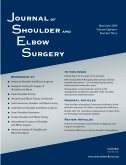
SHOULDER & ELBOW
Intramedullary nail vs minimally invasive plate osteosynthesis for humeral shaft fractures
This report has been verified
by one or more authors of the
original publication.
J Shoulder Elbow Surg. 2014 Jun;23(6):767-74
Forty one patients, who suffered a displaced humeral shaft fracture no more than 30 days before study initiation, were randomly assigned into 1 of 2 groups to compare the efficacy of intramedullary nailing, and minimally invasive plate osteosynthesis. Results from the study indicated that both treatments resulted in similar shoulder function 1 year after surgery. Additionally, no difference in elbow function or complication rate was found between groups. Fracture union was achieved in all but 1 patient (intramedullary group) by final follow up.
Unlock the full ACE Report
You have access to {0} free articles per month.Click below to unlock and view this {1}
Unlock NowCritical appraisals of the latest, high-impact randomized controlled trials and systematic reviews in orthopaedics
Access to OrthoEvidence podcast content, including collaborations with the Journal of Bone and Joint Surgery, interviews with internationally recognized surgeons, and roundtable discussions on orthopaedic news and topics
Subscription to The Pulse, a twice-weekly evidence-based newsletter designed to help you make better clinical decisions
Exclusive access to original content articles, including in-house systematic reviews, and articles on health research methods and hot orthopaedic topics
Or upgrade today and gain access to all OrthoEvidence content for just $1.99 per week.
Already have an account? Log in


Subscribe to "The Pulse"
Evidence-Based Orthopaedics direct to your inbox.
{0} of {1} free articles
Become an OrthoEvidence Premium Member. Expand your perspective with high-quality evidence.
Upgrade Now













































































